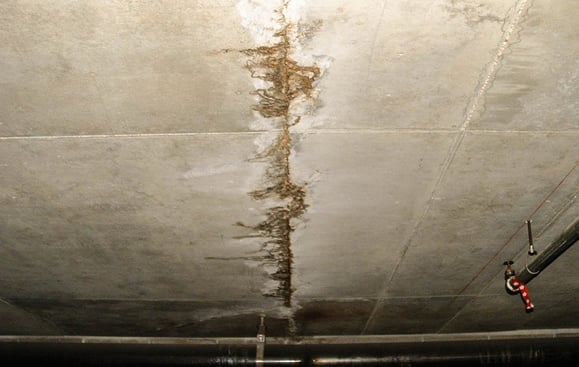This great article in the next paragraphs on the subject of Fire And Water Damage Prevention is exceedingly intriguing. You should take a peek.

Water offers life, however water invasion on some components where it's not expected to be can result in damages as well as aggravation. In addition, residences with water damages scent mildewy and old.
Water can originate from many resources like tropical cyclones, floods, burst pipes, leaks, as well as sewer concerns. It's much better to have a working expertise of security preventative measures if you have water damage. Right here are a couple of standards on exactly how to deal with water damages.
Do Prioritize Home Insurance Policy Protection
Seasonal water damage can originate from floods, seasonal rainfalls, as well as wind. There is also an incident of an abrupt flooding, whether it came from a damaged pipe that suddenly bursts right into your house. To shield your house, get house insurance that covers both disasters such as all-natural disasters, and emergencies like damaged plumbing.
Don't Fail To Remember to Switch Off Energies
When calamity strikes and you're in a flood-prone location, turn off the primary electric circuit. Shutting off the power avoids
When water comes in as water offers as a conductor, electrical shocks. Don't fail to remember to shut off the primary water line valve as a way to prevent even more damages.
If the floodwaters are getting high, maintain your furniture secure as they can move as well as cause extra damage.
Do Remain Proactive as well as Heed Weather Condition Signals
Storm floods can be extremely uncertain. If you reside in an area pestered by floodings, remain proactive and ready whatsoever times. Pay attention to the information as well as evacuation cautions if you live near a body of water like a creek, lake, or river . Take out your belongings and also essential files from the ground floor as well as cellar, after that put them in a safe place as well as the greatest possible degree.
Don't Disregard the Roofing System
Your roofer must take treatment of the damaged seamless gutters or any kind of other signs of damages or weakening. An assessment will stop water from moving down your wall surfaces as well as soaking your ceiling.
Do Take Note Of Little Leakages
There are red flags that can attract your focus and suggest to you some weakened pipes in your home. Signs of red flags in your pipes consist of gurgling paint, peeling off wallpaper, water touches, water discolorations, or trickling audios behind the walls. Fixing and examine your plumbing fixed before it results in massive damages to your house, funds, and also an individual headache.
Don't Panic in Case of a Ruptured Pipeline
Timing is key when it comes to water damages. If a pipeline ruptureds in your house, quickly closed off your primary water valve to cut off the resource and protect against more damage. Call a credible water damage reconstruction professional for assistance.
Water offers life, however water intrusion on some parts where it's not expected to be can result in damages and also inconvenience. In addition, homes with water damages odor old as well as mildewy.
Seasonal water damage can come from floods, seasonal rainfalls, and also wind. Indicators of red flags in your pipelines include bubbling paint, peeling off wallpaper, water streaks, water stains, or dripping sounds behind the wall surfaces. If a pipe ruptureds in your residence, immediately closed off your main water shutoff to reduce off the source and avoid more damage.
Some Do's & Don't When Dealing with a Water Damage
DO:
Make sure the water source has been eliminated. Contact a plumber if needed. Turn off circuit breakers supplying electricity to wet areas and unplug any electronics that are on wet carpet or surfaces Remove small furniture items Remove as much excess water as possible by mopping or blotting; Use WHITE towels to blot wet carpeting Wipe water from wooden furniture after removing anything on it Remove and prop up wet upholstery cushions for even drying (check for any bleeding) Pin up curtains or furniture skirts if needed Place aluminum foil, saucers or wood blocks between furniture legs and wet carpet Turn on air conditioning for maximum drying in winter and open windows in the summer Open any drawers and cabinets affected for complete drying but do not force them open Remove any valuable art objects or paintings to a safe, dry place Open any suitcases or luggage that may have been affected to dry, preferably in sunlight Hang any fur or leather goods to dry at room temperature Punch small holes in sagging ceilings to relieve trapped water (don't forget to place pans beneath!); however, if the ceiling is sagging extremely low, stay out of the room and we'll take care of it DO NOT:
Leave wet fabrics in place; dry them as soon as possible Leave books, magazines or any other colored items on wet carpets or floor Use your household vacuum to remove water Use TV's or other electronics/appliances while standing on wet carpets or floors; especially not on wet concrete floors Turn on ceiling fixtures if the ceiling is wet Turn your heat up, unless instructed otherwise

As a person who reads about Fire And Water Damage Prevention, I figured sharing that blog post was a good idea. For those who enjoyed reading our page kindly make sure you remember to pass it around. Many thanks for your time invested reading it.